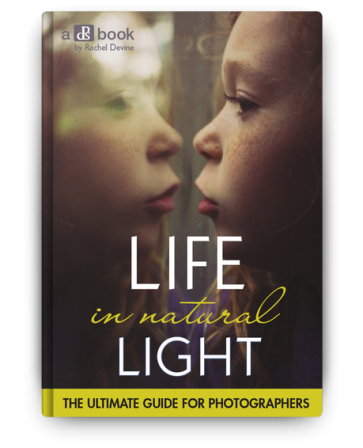Review: Sigma 40mm f/1.4 DG HSM Art Lens
Sigma occupies an interesting and somewhat unique space in the photography industry. They are most widely known for their lineup of third-party lenses for Nikon, Canon, and Sony cameras. Sigma also manufactures other gear such as flashes, filters, and even their own digital camera bodies using their home-grown Foveon image sensor.
While Sigma lenses have always been quite well regarded by amateur and professional photographers, their recent series of Art lenses have really given first-party manufacturers a run for their money. With optical performance that meets, and in many cases, exceeds lenses made by most mainstream camera companies, Sigma has really started to make significant inroads in professional imaging products.
The latest example of this is their outstanding 40mm f/1.4 Art lens.

Sigma 40mm f/1.4: 1/180th second, f/1.4, ISO 720.
Sigma have since fleshed out their Art series of lenses with a variety of focal lengths, in both primes and zooms. Many photographers and videographers have started to take notice, and Sigma has since branched off into a line of Cine lenses specifically designed to meet the demands and challenges of video.

This lens is so big several people thought I was using a zoom.
Its optical path and lens elements fit the mold of what their other Art lenses offer, while its all-metal construction and gear-based focusing make it well suited for video. While I’m no videographer and can’t speak to how this lens functions in that regard, I can say for sure that it is one of the most astonishing photography lenses I have ever used.
The price tag is a bit high, but the tradeoff is a lens with supreme sharpness – even at its widest aperture – and virtually none of the problems that plague so many other lenses.

Nikon D750, 40mm, 1/500th second, f/1.4, ISO 100.
I soon got used to shooting my 50mm lens stopped down a bit. It’s the same with other lenses that I’ve acquired over the years. While they most definitely work while wide open, there’s usually some tradeoff.
The Sigma 40mm f/1.4 is a whole different beast entirely. Using it is an absolute joy because you can basically shoot whatever you want, any way you want, with total impunity.

100% crop of the image above. The sharpness of this lens at f/1.4 is incredible.
However, this lens isn’t exactly aimed at entry-level photographers. It’s designed for people who want (as near as I can tell from using it extensively) no compromises in terms of optical performance. As a result, the lens is big, heavy, expensive, and not exactly the sort that you would take out as a casual go-anywhere addition to your camera kit. Although, if you prioritize outstanding image quality above all else, then this may be the lens you are looking for.
Sharpness
I don’t want the substance of this review to get lost in hyperbole or vain platitudes, but in some way, this Sigma 40mm f/1.4 lens really does operate at a whole other level in terms of sharpness. I’ve used sharp lenses before, but nothing quite like this – especially when shooting wide open.I took this to an equestrian show with my family and just for fun. Then I shot almost exclusively at f/1.4 just to see what this lens could do.
I was consistently impressed by the results.

Nikon D750, 40mm, f/1.4, 1/2000th second, ISO 100.
To further illustrate the sharpness, the following is a 100% crop from the original. You can clearly distinguish individual hairs and eyelashes.

100% crop of original image.
Normally in a shot like this, the trees in the center would be sharp while the outer edges would be significantly less so. They would also have significant chromatic aberration issues on the branches around the perimeter.

Nikon D750, 40mm, f/1.4, 1/250th second, ISO 100.
Granted this wasn’t shot in broad daylight, but I found results like this to be consistent in a variety of shooting conditions.

100% crop of above image.
Foreground/background blur
Some qualities of camera gear can be measured objectively, while others are difficult to fully explain or describe without delving into a more qualitative realm.You could put the Sigma 40mm f/1.4 lens up against similar lenses in a lab and come away with charts and diagrams that illustrate various optical properties of each one.
However, at the end of the day, there’s something about some particular lenses that either grabs me or pushes me away. I don’t know exactly what it is about this particular lens, but the out-of-focus foreground and backgrounds just look, as the saying goes, smooth as butter.

Nikon D750, 40mm, f/1.4, 1/180th second, ISO 1000
Throw in some lights in the background, and you start to see even more to like with the Sigma 40mm f/1.4 DG HSM.

Nikon D750, 40mm, f/1.4, 1/400th second, ISO 1250
Of course, there is some vignetting at f/1.4 but nothing that I would consider out of the ordinary, and well worth the tradeoff compared with shooting at smaller apertures. For example, here’s another picture of a purple magnolia flower that I shot at f/2.8.

Nikon D750, 40mm, f/2.8, 1/180th second, ISO 1800

Nikon D750, 40mm, f/1.4, 1/180th second, ISO 400
Autofocus
If there is one area where this lens didn’t impress me all that much it was autofocus. It’s not that it’s bad, but it’s not exactly superlative either. I suppose I could best describe it by saying it simply gets the job done most of the time. I found that it couldn’t quite keep up with my own two kids when they were running around outside, but for most normal shooting conditions it works pretty well. Autofocus is quick and silent – so quiet that I had to hold my ear up to the lens to hear the gears turning – but if you’re used to the speed of a sports-oriented lens like the 70-200 f/2.8, you might find this is lacking too much for your taste.
Nikon D750, 40mm, f/1.4, 1/180th second, ISO 360.

Nikon D750, 40mm, f/1.4, 1/180th second, ISO 800. Autofocus kept up fairly well with this
remote-control helicopter.
Handling
Similar to autofocus, the overall handling of this lens is something that I can describe in terms of how it feels, but I don’t know if I can accurately quantify it with numbers and hard data. Simply put, this lens is a beast. It’s big, thick, heavy, and feels like it could withstand a beating. Sigma claims it is dust and splash-proof. While I didn’t test this personally, given the overall build quality, I would certainly expect this lens to be able to withstand being out in the elements.
Manual focusing happens with gears, not electronics, so you always have a smooth tactile experience when turning the focus ring. There are no hard stops as you turn the focus ring, but after about 160° of travel, there is a soft click indicating you have reached the nearest or farthest focusing limit. There’s a single switch on the side that alternates between Autofocus and Manual focus, which I found to be simple and effective in regular use.
Image stabilization is nonexistent. However, I didn’t miss it much. With such good image quality at f/1.4, I could use fast shutter speeds without the need for stabilization. Video shooters may have this lens mounted firmly on a tripod, so the lack of image stabilization may not be a mark against it.

Nikon D750, 40mm, f/1.4, 1/2000 second, ISO 100.
Conclusion
My thoughts on this lens can perhaps be best summed up with this photo:
Nikon D750, 40mm, f/1.4, 1/1500 second, ISO 100.
I focused on the flower just to the left of the sun as it peeked over the horizon and it’s sharp as a tack. Zooming in to 100% reveals a level of sharpness and detail, as well as an almost complete absence of chromatic aberration.
That was highly impressive.

100% crop of above image.
If you’re looking for a lens that offers outstanding optical performance first and foremost and is designed to meet the needs of demanding photographers and videographers, then I don’t think I can recommend the Sigma 40mm f/1.4 Art highly enough.
Share this article.







































